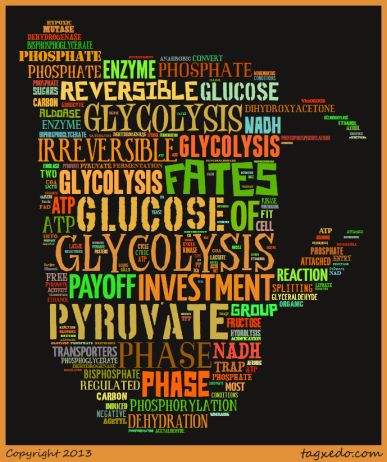Hey guys have to post about glycolysis,i really thought it was going to be difficult be it was so GOOD and interesting. I liked 🙂
So glycolysis occurs in every cell in the body and is the oldest metabolic pathway. Glycolysis is the process in which one glucose molecule is broken down to form two molecules of pyruvic acid. The glycolysis process contains many steps that occurs in the cytoplasm of animal cells, plant cells, and the cells of microorganisms. There are 10 enzyme reactions,5 in the energy investment phase and 5 in the energy generation phase. There are two irreversible and three reversible enzyme catalysed reactions in the the energy investment stages. What also occurs is that two molecules of ATP is converted into 2 ADP. So the next stage energy generated stage one of the five reactions are irreversible and the four reversible. Here four molecules of ATP are made and 2 molecules of NADH.
In the end every glucose molecule entering glycolysis :2ATP AND 2NADH+ used there are 4 ATP and 2 ADH generated.


So these are the ten enzymes used and the there products
Did you know that all the enzymes have a induced fit and the Mg+ stabilizes it which prevents hydrolysis of the ATP.
Important to note:
Glycolysis occurs in the cytosol
When ATP is formed from ADP in glycolysis is referred to as SUBSTRATE LEVEL PHOSPHORYLATION
Oxidation level phosphorylation occurs in the inner membrane of the mitochondria
In plants lastly it is photo-phosphorylation which occurs in the thalkoid-chloroplast.
.







